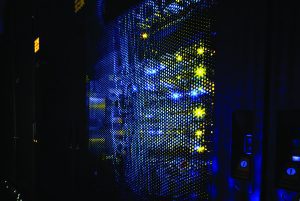At SxSW this year, connectivity is more important than ever before as AI, IoT, and edge computing play a bigger role in delivering high-quality video, music, and gaming to consumers each day. With this in mind, film, music and interactive content stand to suffer if connectivity is threatened.
In the panel on March 9 at 2pm CT, How Connectivity Will Control Everything We Know, Andrew Blum, journalist, curator, and author of Tubes, will offer his expertise into how infrastructure, technology, architecture and design are critical to connectivity in business today. In the meantime, however, I sat down with Andrew to discuss how the internet has changed and his research behind Tubes to understand the role of technology infrastructure today.
- How did your book, national bestseller, Tubes, first come to fruition?
Andrew Blum: This was back in 2009, when I was writing mostly for Wired magazine. The term “cloud” hadn’t come into wide usage, Amazon and Google’s data centers were still top secret, and a new undersea cable hadn’t been built in nearly a decade. But—two years into the iPhone era—I knew how much time I was spending online, and I couldn’t believe there wasn’t a huge, hidden, physical world somewhere back there, powering it all. I tried to figure out what would happen if I yanked the cable from the wall, and followed it—and there was, of course, the world I imagined.
- The internet has become such a necessary part of our day-to-day life, but we still see new developments that bring a level of shock and awe. What still surprises you about the internet and the connected world?
Blum: I used to say that what surprised me most was how small the Internet was—that this relatively tight community was keeping the whole global thing stitched together. But now it often feels like the opposite: I’m amazed by the extent to which the Internet’s infrastructure has filled out and diversified. Every month there seems to be a new undersea cable, a new way of thinking about content delivery, or a new trick to connect the edge and the core. No wonder so many of the places where bandwidth used to be sparse it’s now abundant (or close): from subway platforms in New York to jetliners over the Atlantic Ocean. The Internet is by no means finished (not that it ever will be), but I’m surprised at how much it’s expanded in the last decade.
- Since June 2012, the connected world has changed so much. Will we see any of that reflected in your next book on global machinery and weather observation? If so, what might that look like?
Blum: My new book—which will be out next year—is about weather forecasting, and the systems that power it. In 2012, the connected world was primarily used for moving information across distances. Today, networks and computers are much more likely to be used to understand and shape the world immediately around us, for everything from self-driving cars to home music systems. The weather forecast may be the “OG” IoT.
- Let’s close with a prediction. The internet and the IoT are partly to blame for the rapid pace of data generation around the world. What do you see as the next trend to solve for this growth? The next big concern?
Blum: My main concern is how the current crop of Internet giants—especially Facebook, Google, and Amazon—will evolve or decline. Will their continued growth strangle the Internet’s openness? Undoubtedly data is being generated at an astonishing pace, but who owns it and who does it serve? Will the services and entertainment the giants’ provide be compensation enough for their control? And, of course, if (or when) they decline, what will come next? In 1998, you might have seen the barest outlines of their future dominance. What outlines can we see in 2018?

